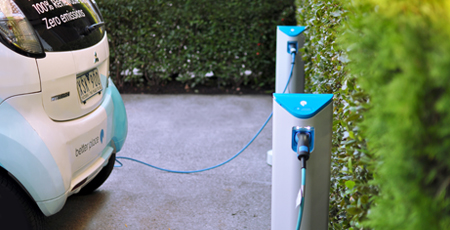There is more than one way to heat your house and water with renewable energy. Using solar energy to power your home is of course one way. But another option is to use a ground-source heat pump (GSHP) (also called a geothermal heat pump* or ground heat pump). This still uses electricity to power the pump, so it is not strictly renewable unless your electricity is also sourced from a renewable supply, but the energy produced is about three times the amount of electricity used, so if solar hot water or a a solar power system is not suitable for your location, or is not able to generate enough electricity for all your needs, a ground-source heat pump could be a good option.
A ground-source heat pump works through extracting latent heat from the ground, through a borehole or a series of underground pipes. The pipes carry a mixture of water and anti-freeze into which the heat is transferred. It is then converted, using the pump, into thermal energy for heating your home or water.
Because seasonal variation in ground temperature is much less than air temperature – and disappears altogether at seven metres below ground – the ground-source heat pump can also be designed to pump heat back into the ground in summer, cooling the air in the house.
Practical considerations
In a new home the pipe network can be installed under the home before it is built. For an existing home there will need to be sufficient garden space available to dig a large trench.
Another advantage to installing a heat pump during the initial building of a home is that the heat generated works best with underfloor heating, which can allow room temperatures of 25-28°C (77-82°F).
While the GSHP is more expensive to install than a conventional heating or cooling system, or traditional hot water system, estimates for recouping cost range from only three to ten years. They have a life-time of an estimated 20-25 years for internal components, and 50 years for the ground portion. And in a 1993 report from the Environmental Protection Agency Space Conditioning: The Next Frontier – Report, ground source heat pumps are “the most energy-efficient, environmentally clean, and cost-effective space conditioning systems available”.
 According to Cathy Strongman’s The Sustainable Home, a standard installation can take as little as two days.
According to Cathy Strongman’s The Sustainable Home, a standard installation can take as little as two days.
*Note that although a ground-source heat pump is sometimes refered to as a geothermal heat pump, it is not the same as traditional geothermal power, which is used to generate electricity (not just heat).
Sources: Cathy Strongman’s The Sustainable Home (2008), Environmental Protection Agency Space Conditioning: The Next Frontier – Report (1993), Wikipedia
Healthy Family | Healthy World



